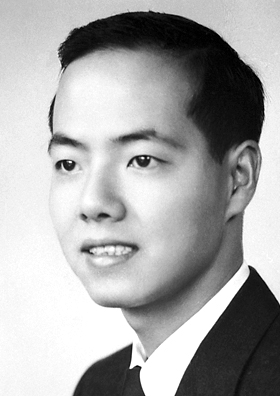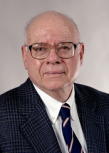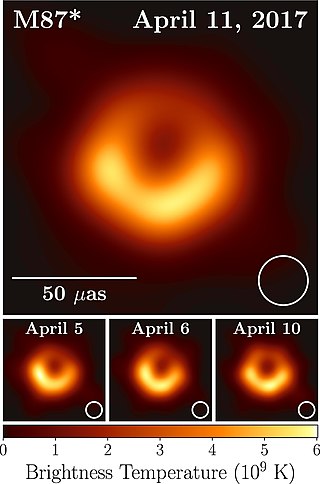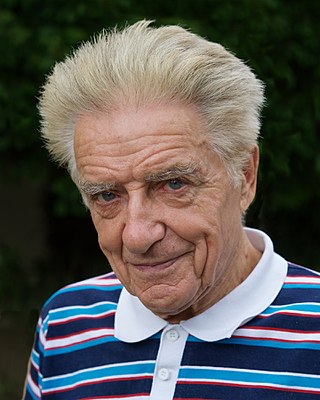Related Research Articles

Tsung-Dao Lee is a Chinese-American physicist, known for his work on parity violation, the Lee–Yang theorem, particle physics, relativistic heavy ion (RHIC) physics, nontopological solitons, and soliton stars. He was a university professor emeritus at Columbia University in New York City, where he taught from 1953 until his retirement in 2012.

Charles Hard Townes was an American physicist. Townes worked on the theory and application of the maser, for which he obtained the fundamental patent, and other work in quantum electronics associated with both maser and laser devices. He shared the 1964 Nobel Prize in Physics with Nikolay Basov and Alexander Prokhorov. Townes was an adviser to the United States Government, meeting every US president from Harry S. Truman (1945) to Bill Clinton (1999).

Willis Eugene Lamb Jr. was an American physicist who won the Nobel Prize in Physics in 1955 "for his discoveries concerning the fine structure of the hydrogen spectrum." The Nobel Committee that year awarded half the prize to Lamb and the other half to Polykarp Kusch, who won "for his precision determination of the magnetic moment of the electron." Lamb was able to precisely determine a surprising shift in electron energies in a hydrogen atom. Lamb was a professor at the University of Arizona College of Optical Sciences.

Norman Foster Ramsey Jr. was an American physicist who was awarded the 1989 Nobel Prize in Physics for the invention of the separated oscillatory field method, which had important applications in the construction of atomic clocks. A physics professor at Harvard University for most of his career, Ramsey also held several posts with such government and international agencies as NATO and the United States Atomic Energy Commission. Among his other accomplishments are helping to found the United States Department of Energy's Brookhaven National Laboratory and Fermilab.

In the physical theory of spin glass magnetization, the Ruderman–Kittel–Kasuya–Yosida (RKKY) interaction models the coupling of nuclear magnetic moments or localized inner d- or f-shell electron spins through conduction electrons. It is named after Malvin Ruderman, Charles Kittel, Tadao Kasuya, and Kei Yosida, the physicists who first proposed and developed the model.

Peter Goldreich is an American astrophysicist whose research focuses on celestial mechanics, planetary rings, helioseismology and neutron stars. He is the Lee DuBridge Professor of Astrophysics and Planetary Physics at California Institute of Technology. Since 2005 he has also been a professor at the Institute for Advanced Study in Princeton, New Jersey. Asteroid 3805 Goldreich is named after him.
Raymond David Mindlin was an American mechanical engineer, Professor of Applied Science at Columbia University, and recipient of the 1946 Presidential Medal for Merit and many other awards and honours. He is known as mechanician, who made seminal contributions to many branches of applied mechanics, applied physics, and engineering sciences.

Charles Kittel was an American physicist. He was a professor at the University of California, Berkeley from 1951 and was professor emeritus from 1978 until his death.

Herbert Lawrence Anderson was an American nuclear physicist who was Professor of Physics at the University of Chicago.
Gordon Alan Baym is an American theoretical physicist.

Feryal Özel is a Turkish-American astrophysicist born in Istanbul, Turkey, specializing in the physics of compact objects and high energy astrophysical phenomena. As of 2022, Özel is the Department Chair and a professor at the Georgia Institute of Technology School of Physics in Atlanta. She was previously a professor at the University of Arizona in Tucson, in the Astronomy Department and Steward Observatory.
Alan Mark Portis was an American solid-state physicist and founder of the Berkeley Physics Laboratory.
Carson Dunning Jeffries was an American physicist. The National Academies Press said that Jeffries "made major fundamental contributions to knowledge of nuclear magnetism, electronic spin relaxation, dynamic nuclear polarization, electron-hole droplets, nonlinear dynamics and chaos, and high-temperature superconductors." He was noted for being the first to observe the isotropic spin-spin exchange interaction in metals . He also discovered methods for the dynamic nuclear polarization by saturation of forbidden microwave resonance transitions in solids. He also discovered the existence of giant electron-hole droplets in semiconductors. He was a member of the U.S. National Academy of Sciences and the American Academy of Arts and Sciences.

Julius Ashkin was a leader in experimental and theoretical physics known for furthering the evolution of particle physics from nuclear physics. As a theoretical physicist he made contributions in the fields of statistical mechanics, solid state physics, nuclear physics, and elementary particle physics. As an experimental physicist his main contributions concerned the passage of certain particles through solid matter and their subsequent decay. He was recognized for the quality of his research and teaching.

Charles H. Holbrow was an American physicist.
Norman Myles Kroll was an American theoretical physicist, known for his pioneering work in QED.

Wolfgang Kundt is a German astrophysicist. He studied Theoretical Physics in Hamburg, centered on general relativity, and got his diploma in 1956 and his PhD in 1959, advised by Pascual Jordan.
John Michael Cornwall is an American theoretical physicist who does research on elementary particle physics and quantum field theory as well as geophysics and physics of near-space. He is known for the Pinch Technique.

Burton Jones Moyer was an American nuclear physicist known as "The Father of Accelerator Health Physics" for his seminal work in shielding design and safety procedures used in the operation of many large particle accelerators. He is notable for the discovery of the neutral pi meson.
References
- ↑ Columbia College (Columbia University). Office of Alumni Affairs and Development; Columbia College (Columbia University) (1974–1977). Columbia College today. Columbia University Libraries. New York, New York. : Columbia College, Office of Alumni Affairs and Development.
- 1 2 3 American Institute of Physics, Physics History Network, "Malvin A. Ruderman"
- ↑ Mathematics Genealogy Project, "Malvin Ruderman"
- ↑ Charles Kittel, Walter D. Knight, and Malvin Ruderman, Mechanics: Berkeley Course in Physics, Volume 1, McGraw-Hill (1965), Preface, p. ix.
- ↑ Malcolm S. Longair, The Cosmic Century: A History of Astrophysics and Cosmology, Cambridge University Press (2006), p. 196.
- ↑ "Malvin A. Ruderman". nasonline.org. Retrieved December 13, 2021.
- ↑ "Malvin Avram Ruderman". American Academy of Arts & Sciences. Retrieved December 13, 2021.
- ↑ "APS Member History". search.amphilsoc.org. Retrieved December 13, 2021.